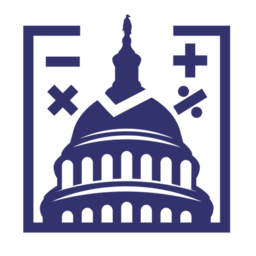Are election forecasts bad for democracy?
Maybe, but that obscures their value as tools for journalism
This is one of the bigger questions that forecasters are receiving this year. It will not surprise you that I have some thoughts on the subject. Here is a shorter post outlining what I think is a reasonable path to an answer.
Editor’s Note: This is a paid post for premium subscribers. If you are a subscriber and have friends that you think might learn something from this post, you should feel open to forward it to them regardless of their membership—though I would love if you urged them to sign up for posts by clicking the button below:
Before we begin to answer, let me say that I don’t think the overall question is all that helpful. I propose we reorient it not to ask if forecasts are bad for democracy, but if they are better for democracy than the alternative. We do not live in a world where the absence of election models would mean that election handicapping writ large disappears, so I don’t see the real value of the the implications of the first question. This may sound like pedantry, but it’s important for guiding a proper inquiry.
So, first, the journalistic answer: Is election forecasting better for democracy than the alternative? If the alternative is media punditry and “experts” that get paraded out of their think tanks and consultancies to opine about the strategy of campaigns, I think we have to say yes. Quantitative forecasters reliably outperform the leading TV hosts at measuring the state of the horse race and predicting the range of possibilities for where it will be in November. The most famous example of this is Nate Silver’s bet against Joe Scarborough in 2012 after the latter said that anyone who didn’t think the race was a toss-up was a moron. But it is not the only example. Just during the 2020 election, pundits have regularly spouted off about “hidden trump voters” and the impacts of newsy events such as the conventions or George Floyd protests, always eyeing the “big thing” that will change the race. But forecasters have honed in on the stability of the race, which tends to begin more stability.
The truth is that election forecasts often do a better job at putting the current electoral moment in the context of history, and then telling consumers what they can learn from that history, than our guts or the conventional wisdom. I believe that that’s because forecasts are simply formulations of political behavior — bad economy = bad for the president, good approval = good, states move together not independent, etc — that are easy for computers to balance and tabulate, but that humans can lose sight of.
Journalistically at least — and I think that’s the primary way to evaluate election forecasts — the models are better for democracy than the alternative because it gives readers a better understanding of how the election will play out, and often, why that might be the case.
But this is only one lens through which to view the forecasts. There is also a normative or more expressly democratic angle. Second, let’s ask: what are downstream consequences of high-profile forecasts on voter behavior?
Some research has suggested that overconfident forecasts can depress election turnout for the favored party. Though I don’t think the data are conclusive, the logic is certainly appealing. Voting in America is hard, primarily because it can take hours to cast a vote. Because of that, people are primed to seize upon legitimate motivations for not voting. If they see a forecast that says their candidate has a 99% chance of winning the election, that’s a good reason to spend more time with your kids or cooking dinner or even just watching TV.
The biggest caveat to this research is, of course, that we don’t know who is being exposed to the forecasts. If the readership for sites like FiveThirtyEight are highly politically engaged and will vote anyway, than this is not so much a concern. But I don’t think we’ve answered this question yes, so this goes on my “maybe forecasts are bad for democracy” list.
…
Here’s the bottom line for me, though: so long as we have polls, people will try to predict elections with them. It’s better that we have models that average polls together and simulate the possible uncertainty in the data than it is to just let people cherry-pick the data that fit their narrative — or, worse, to have low-quality forecasters parading around their 99% chances that Biden or Trump will win. When I’m deciding whether to forecast something, that’s what I have on my mind.




Question. Do you have an estimate on long will it take for the death of Justice Bader-Ginsburg to be reflected in the polls used in the Economist model?
The average person generally watches pundits on TV and may have an inaccurate view of the race and the Electoral College race. For example, the CNN Electoral College Map has Biden at 269 electoral votes and Trump at 169 electoral votes and NBC Electoral College Map as Biden at 290 electoral votes and Trump at 163 electoral votes. How much does that tell the viewer? It is usually hard to find an article explaining the current status of the Electoral College map. Is it worthwhile for the viewer? I'm not sure. Election forecasts provide a greater understanding of the status of the race than these maps.
https://www.cnn.com/election/2020/electoral-college-interactive-maps
https://www.nbcnews.com/specials/road-to-270-2020/